Dylan Buell | Getty Images
The first road-course race for the Next Gen car delivered as drivers took to the Circuit of The Americas this weekend and battled it out all the way to the last lap. Ross Chastain prevailed after impacts with AJ Allmendinger and Alex Bowman in the closing laps.
Chastain was on his way to his first Cup Series win, so it was understandable he wanted to take the last few turns in a very careful manner. He might have been too careful as Allmendinger and Bowman were able to reach him in an overtime restart, tracked down by multiple Chevrolets that showed similar speed. But even though there was some light carnage, Chastain was able to make it through and get his car over the finish line and to a burnout.
RELATED: Chastain breaks through at COTA | Cup Series standings
As we discussed Saturday, the chassis and body of the Next Gen car are showing significant durability when it comes to beating and banging in a race, and the fact Chastain was able to bounce off another car and still charge across the finish line further drives that point home. Not only was that car able to finish the race and win, but it is already being converted back to oval spec and will race at Talladega Superspeedway, according to a recent report from Charlotte Observer journalist Alex Andrejev.
This all fits in line with the ease of conversion from oval to road-course spec and back, and the fact the Next Gen car does that change with nuts and bolts, where a previous-generation car may have required specialized cars for each type of track due to certain components being welded on.
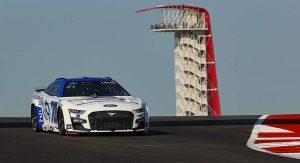
Some competitors weren’t quite as fortunate when it came to their impacts in the race. Road-course specialist Andy Lally make an early exit after an impact to his No. 78 Ford from the No. 6 Ford piloted by Brad Keselowski. The impact to the rear of Lally’s Live Fast Motorsports entry caused a broken control arm that ultimately resulted in a retirement as that’s not a component that is easily replaceable on pit road.
The No. 78 Ford had to start at the rear of the field and complete a pass-through penalty at the beginning of the race due to three inspection failures, and Lally’s plan — as he shared with us on Twitter Spaces on Sunday morning — was to fight to keep the car on the lead lap while attempting to avoid damage riding at the back of the field until the end of the race. Unfortunately chaos ensued all down the line, and his day was finished quickly. Lally approached the race not only as an opportunity for him, but an opportunity to help a team like Live Fast as he stated he wanted to “try to collect as much data as possible, and since you know you’re not a full-time driver, you really aren’t that concerned about stage wins and stuff, and trying to get in there and possibly damage the car. But race finishes (are) probably going to be pretty significant, so I can see that that whole perspective of trying to to save things and find out what works.”
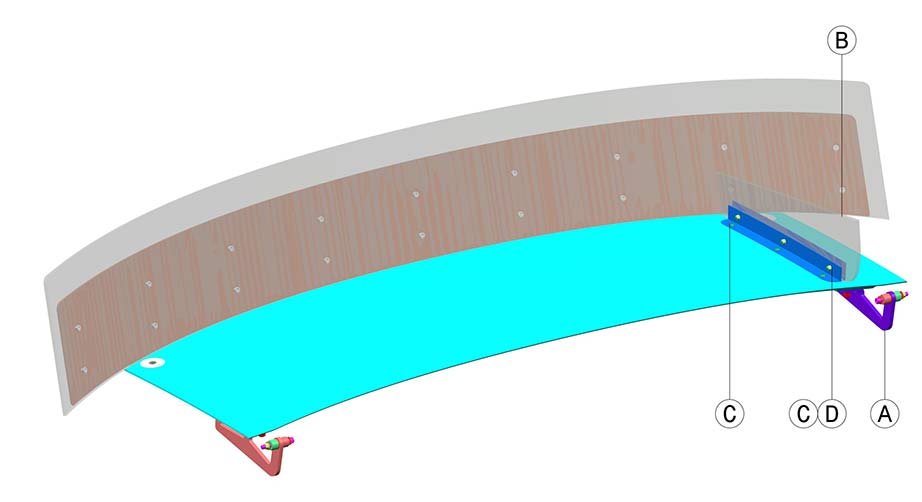
Lally shared his post-race experience on Racing Spaces on Tuesday, stating those three inspection failures on the No. 78 were the result of a deck lid that was not in compliance with the measurements set out in the rulebook as checked by the Optical Scanning System (OSS). The composite decklid reportedly had a bow to it, which resulted in one portion of it being outside of the lines. Crew members worked to heat and reshape the decklid back to spec, but it took them multiple tries to get there and pass. While larger teams might have multiple options for decklids they can swap to quickly, up-and-coming teams such as Live Fast Motorsports may not be as fortunate and the decklid they were using was actually one that was formerly used on a test car by a larger Cup organization they made to work on their car.
While the Next Gen car brings a lot of parity to the field, failures like this will still be common for smaller teams that may not have resources, such as multiple versions of a body part or an in-house OSS to check various parts combinations. In this case, it was not a team chasing performance but merely one trying to make use of the parts they have available to them and being just outside of the tolerance. On the other hand, technical inspectors apply the rules equally to everyone, and parts such as the decklid receive close scrutiny because they are one of the components teams try to shift around slightly to find the best benefit from an aerodynamic perspective.
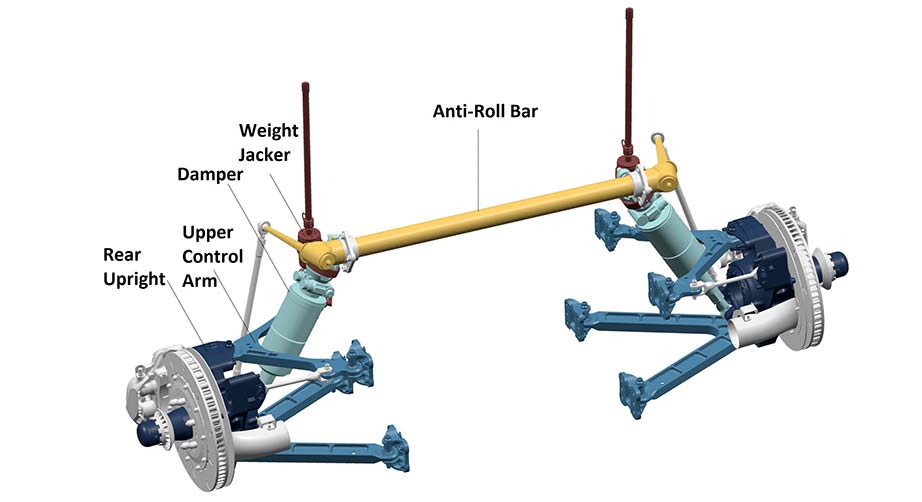
While the Next Gen car has been extremely durable from a body and chassis perspective and teams have been able to reuse cars from multiple races, that broken control arm does highlight a pain point that has been echoed by many in the garage regarding some of the suspension components. According to sources in the Cup Series garage, seeing bent or broken control arms is an issue that has popped up for a few cars after contact during some of these races, and teams have shared their feedback regarding these components in search of improvements. While the control arms are not causing huge issues, the suspension components that have been the largest issue have been the rear toe links, which as we saw Sunday with the No. 22 of Joey Logano, are vulnerable to bend or break upon impact.
The design of components such as these toe links is often a balance of durability of the specific components versus potential damage to the rest of the car, so they are often designed for a certain strength in order to absorb impact without damaging bigger components that may be attached. Finding that balance is key, and in this case, it’s something that has been up for discussion between teams and NASCAR officials, according to reports from recent competition meeting notes.
While it may seem a lot has not changed, the Next Gen car has been under a continuous improvement process, and parts such as these are constantly evaluated so that improvements can be made. According to the latest version of the Engineering Change Log for the car, more than a dozen enhancements have been made since the start of the season, so it is likely different variants of toe links are currently being simulated and we might see some testing of that in the future.
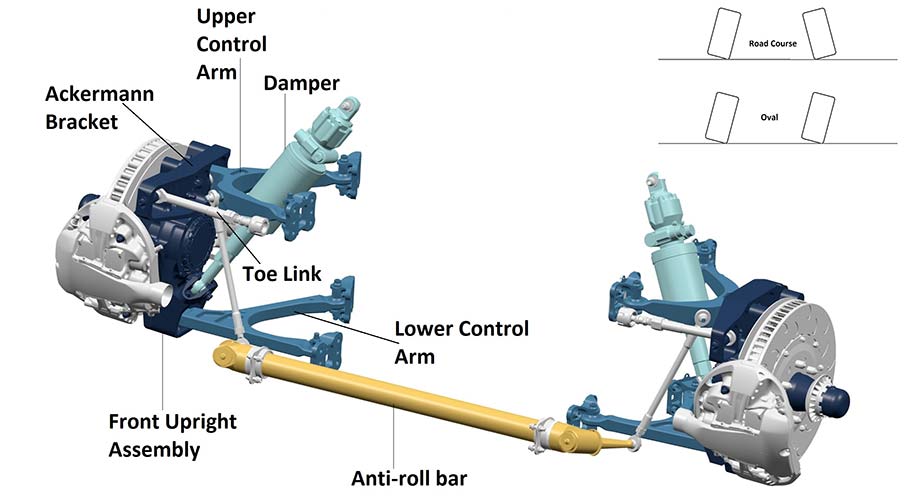
The front toe links on the car are a bit thicker than what we see in the rear, and according to reports from the garage, one of the sets that is currently being evaluated would have the rears matched in thickness to the front. Those front toe links are connected to the new rack-and-pinion steering, which saw its points-race debut at a road course this weekend and some of the biggest action that those components have seen.
Drivers seemed to be pleased with the crispness of the steering at COTA from the new system, but a few did run into trouble, with drivers such as Christopher Bell and Daniel Suarez losing power steering for portions of the race. Both drivers were able to finish the race but not in an optimal position. According to reports from the garage, most of the steering issues sounded like they were fairly minor and likely related to the stresses of a road course on the rack and likely can be resolved before the next road-course race with some adjustments in how the racks and their components are secured.
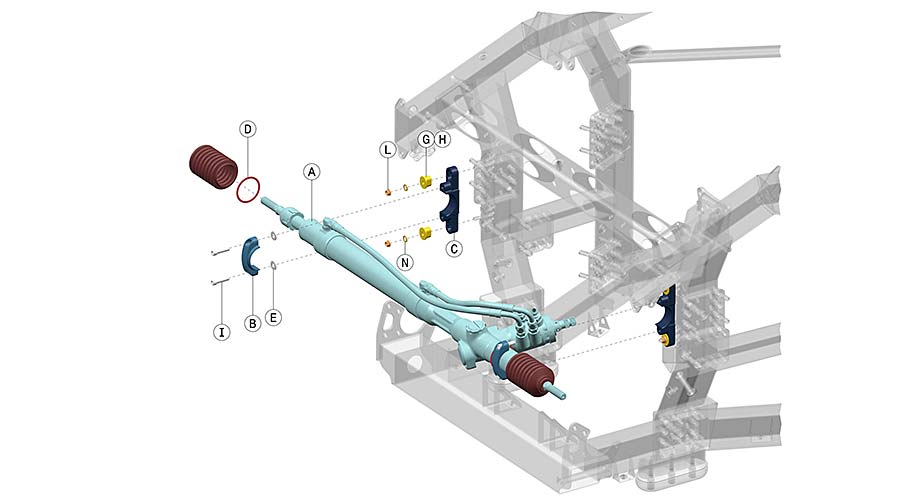
While COTA was a tough test for these Next Gen cars, they continued to prove to be durable from an overall perspective and surely generated plenty of data for the industry to use to make improvements before the next road-course race and to make the car better overall. Changes such as that rack-and-pinion steering and the independent rear suspension really shined through at this circuit as the cars showed a lot of speed, but without losing their stock-car attitude — a huge part of what makes road-course racing in NASCAR so entertaining.



